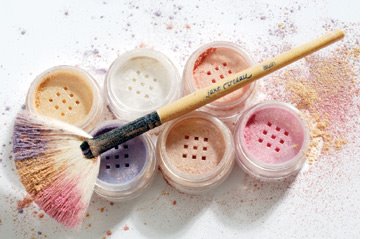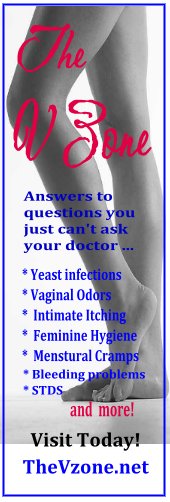 A new study suggests that the same shea butter oil which helps skin look younger may in fact alleviate the aches and pains of perimenopause and menopause. Here’s what you need to know!
A new study suggests that the same shea butter oil which helps skin look younger may in fact alleviate the aches and pains of perimenopause and menopause. Here’s what you need to know!
By Colette Bouchez
By now you've probably heard – or maybe even experienced first-hand - the power of Shea Butter to moisturize and repair damaged, aging skin. As an ingredient in many high-end moisturizers it’s use as an anti-aging skin preparation is nothing short of legendary.
Now, however, a growing body of research suggests that natural compounds found in the oils of the shea tree don’t just help you look good, they may, in fact, be what’s really bubbling out of Nature’s own fountain of youth – helping us to turn back the hands of time on a variety of age-related conditions, including those aches and pains of menopause.
And that, in fact, is precisely the finding of a brand new study to be published in January 2010 in the journal PhytoTherapy Research. Here doctors from the Australian Center for Complementary Medicine Education and Research (ACCMER) documented how a supplement containing therapeutic doses of shea oil has the ability to not only reduce incidence of midlife joint pain, but in some instances actually reverse of the underlying age-related damage behind the pain.
According to lead researcher Dr. Phillip Cheras, the secret lies in a natural chemical known as triterpene, found naturally in shea oil. When present in therapeutic levels it works, says Cheras, by reducing levels of an inflammatory compound known as TNF alpha – a natural substance made by the body when joints are under stress.
“Shea extract, the principal ingredient of FlexNow, [the supplement used in the study] has been shown to significantly reduce both joint pain and elevated levels of TNF alpha. There was also a significant decrease in the breakdown of cartilage in the osteoarthritis patients who received the shea extract”, says Cheras, an adjunct professor with NatMed Research at Southern Cross University of New South Wales.
And in fact the study found that after just 3 months of use, participants taking the FlexNow supplement not only experienced some 25% reduction in joint inflammation, they also experienced a reduction in several inflammatory “markers” associated with joint damage.
This may be particularly important for women over 35. Why? From this age forward we begin to gradually lose both estrogen and progesterone. While the drop in these hormones is most often associated with the traditional hot flashes and night sweats, doctors now know it also impacts how a woman perceives pain. Complicating matters further , when estrogen levels are high they keep a lid on the production of inflammatory chemicals particularly those linked to not just joint pain, but also heart disease, high blood pressure, even diabetes. So, without estrogen's protection, production of all these inflammatory chemicals can climb, writing us a "virtual prescription" for feeling more aches as we age.
Flex Now – Feel Good Later: The Study Specifics
The 15 week, randomized, double-blinded study involved 89 patients all of whom were diagnosed with osteoarthritis of the knees or hips. At the start of the study a variety of tests documented not only the degree of joint damage, but also a series of bio markers for inflammation of various types.
Each of the participants were then randomly selected to receive either daily treatment with SheaFlex 70 – a triterpene-rich extract of the African shea tree - or a placebo. Neither the patients nor the researchers knew who was taking the supplement or who was taking the placebo.
The result: In patients taking the FlexNow , those with the highest levels of inflammatory bio markers saw the most significant decrease in both inflammation and cartilage breakdown, as well as decreases in bone remodeling, when compared to those taking placebo.
More specifically, the FlexNow group experienced drop in levels of TNF-alpha of 23.9% vs 6% for the placebo group. Markers for cartilage destruction ( CTX-II) dropped by a whopping 29% in the FlexNow group, while in the placebo group, levels increased by 17.6%.
But it wasn’t only those most affected by inflammation who benefited. Indeed, the study showed that across the board rates of inflammatory chemicals dropped nearly 11% in all the study participants using the shea tree extracts – while inflammation in those taking the placebo increased by nearly 12%.
According to the researchers, their findings indicate that in patients with the highest levels of osteoarthritis biomarkers, “ SheaFlex70 [the active ingredient in FlexNow] demonstrated multiple beneficial activities consistent with slowing the disease process.”
But this wasn’t the first time the level of therapeutic doses of shea oil were proven to help. Indeed, previous studies on Flex Now found it also had a positive impact on inflammatory markers linked not only to joint pain, but those linked to high cholesterol and high blood pressure.
Reducing Inflammation Naturally: What Else You Can Do
While clearly using shea oil supplements is one way to reduce the inflammatory chemicals linked with all those aches and pains, there are other ways that, alone, or together with a supplement, can help you feel even better, ,faster. Here’s what the experts say you can try:
1. Lose a few pounds! Yes I know you’ve heard it all before – the extra weight puts pressure on joints that makes them feel worse. But what you might now know is that it’s not just lugging around those extra pounds that matter. Studies show that fat cells are a major producer of the inflammatory chemicals that not only increase joint pain, but can also increase your risk of diabetes, high blood pressure and heart disease. So, the fewer fat cells you have , the less inflammatory chemicals your body will produce – and yes, losing even 5 to 10 pounds can make a huge difference.
2. Eat less sugar and foods made with white flour. Not only are they higher in calories, but studies show both these ingredients can increase the inflammatory chemicals linked to osteoarthritis, heart disease and diabetes.
3. Eat less red meat. Like sugar and white flour, red meat also can increase the body’s production of inflammatory chemicals. In moderation red meat is a good source of protein – but eat too much and you’re setting your body up for a variety of pain-causing conditions.
4. Eat more fish – particularly salmon. It has among the highest rates of anti-inflammatory action of any food. Not only is it good for your joints, it’s great for your wrinkles! Eat it 3 times a week and see a noticeable improvement in 30 days.
5. Try yoga – or other non-stressing exercise, such as water sports. This can help reduce stress – which is a major contributor to the production of inflammatory chemicals in the body.
Colette Bouchez is the author of Your Perfectly Pampered Menopause and The Hot Flash Solution.
For more fabulous health and beauty tips for women over 40 visit RedDressDiary.com. Or for money saving beauty and style tips visit CheapChicDiary.com For more menopause advice visit YourMenopause.com.
Disclaimer: This article represents independent reporting of a new medical study. No payment or product samples were involved.
Copyright by Colette Bouchez 2009 - All Rights Reserved. In addition to US Copyright, the text of this RedDressDiary article is licensed under a Creative Commons Attribution-ShareAlike 3.0 License. All formatting and style elements of this page are not available under this license, and Colette Bouchez retains all rights in those elements.
Thursday, December 17, 2009
Shea Butter Oil: The New Fountain of Youth?
Monday, December 7, 2009
Fabulous Over 40: 10 Top Make Up Tips
 Whether you've just turned 40, you're heading down the pike towards 50 or a glam doll who's changing the world at 60, super celebrity make-up guru Michael Maron offers these 10 make up tips on how to look fabulous ... at any age!
Whether you've just turned 40, you're heading down the pike towards 50 or a glam doll who's changing the world at 60, super celebrity make-up guru Michael Maron offers these 10 make up tips on how to look fabulous ... at any age!
1. Avoid heavy foundation for over 40 skin, or powders, and always try to match what you use to your complexion color, rather than trying to add color to your face with a darker foundation or powder.
2. Don't use blushes or bronzers with a muddy or a brown tone. This tends to age skin and could make brown spots appear darker.
3. Avoid ultra light concealer under the eyes. This brings out puffiness and increases the look of the "tear trough" indentation under the eye. Instead, choose a color that matches your skin tone and blend well.
4. Always apply foundation before you apply concealer – you might not need as much as you think.
5. Avoid frosted, glittery, or very bright eye shadows – they'll accentuate wrinkly skin above the eye.
6. Do make lips look fuller by moisturizing and using lip liner – but make certain it's the same color as your lipstick. If you use colorless lipgloss, choose a lip liner that matches your own lip color and always blend it before adding the gloss. The look of the "heavy lip outline" is gone!
7. Do line eyes, but chose either a soft pencil or a liquid liner you can smudge slightly. A hard line around the eye is aging – so are clumps of heavy mascara, so keep it light.
8. Do not apply blush on the "apples" of the cheeks. As you age, the "apples" go south and color here ages the face. Instead keep blush higher on the face, the tops of the cheekbones is perfect for most women.
9. Avoid brow pencils that give a "shiny" or hard look. Instead opt for a powder or soft pencil – and always match your hair color.
10. Don't over powder your face – even the lightest products can age you if you use too much.
Having a hot flash? Your makeup could be making it worse! Visit HotFlashSolutions.com to learn more!
Wondering if mineral makeup is right for over 40 skin? Check out our free guide on mineral make-up and know for sure!
Copyright by Colette Bouchez 2009 - All Rights Reserved.
In addition to US Copyright, the text of this RedDressDiary article is licensed under a Creative Commons Attribution-ShareAlike 3.0 License. All formatting and style elements of this page are not available under this license, and Colette Bouchez retains all rights in those elements.



































